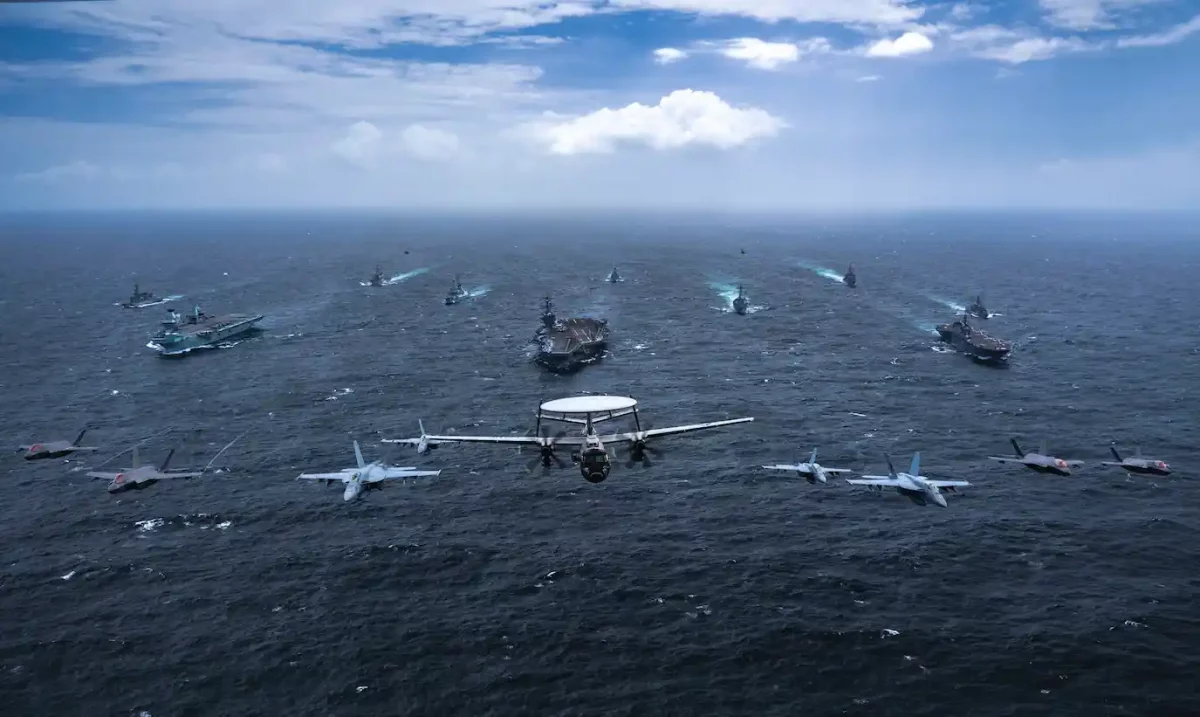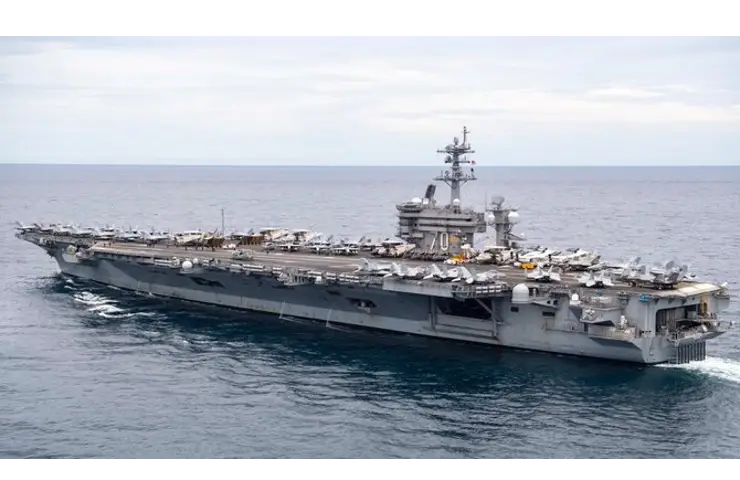![]() The navies of Australia, Japan, the UK and the US held a four-day training in eastern Indian Ocean from October 15-18. This exercise comes on the heels of the Malabar maritime exercise and a number of smaller exercises held by India, Japan and Sri Lanka in various parts of the Indian Ocean.
The navies of Australia, Japan, the UK and the US held a four-day training in eastern Indian Ocean from October 15-18. This exercise comes on the heels of the Malabar maritime exercise and a number of smaller exercises held by India, Japan and Sri Lanka in various parts of the Indian Ocean.
The US aircraft carrier Carl Vinson participated in the exercise. It had earlier joined phase two of the Malabar Maritime Exercise with the navies of India, Japan and Australia in the Bay of Bengal. The US aircraft carrier and its accompanying battleships carry combat-ready troops with 7,000 sailors.
The US Navy said that the Indo-Pacific navies "engaged in enhanced planning, advanced maritime communication operations, anti-submarine warfare operations, air warfare operations, live-fire gunnery events, replenishments-at-sea, cross-deck flight operations, and maritime interdiction operations".
Royal @Australian_Navy frigate #HMASWarramunga (FFH 152) and destroyer #HMASBrisbane (DDG 41) take on fuel from the #USNavy @MSCSealift fleet replenishment oiler #USNSBigHorn (T-AO 198) during a recent underway replenishment in the South China Sea. #NavyPartnerships pic.twitter.com/LSsAiDrbH3
— U.S. Pacific Fleet (@USPacificFleet) October 18, 2021
Called the Maritime Partnership Exercise (MPX) 2021, the navies of the four allies seek to enhance regional security and stability. It also helped in strengthening interoperability and increasing their operations in the Indian Ocean region.
Talking about the MPX exercise, Rear Admiral Dan Martin, Commander, Carrier Strike Group, said: “All four participating nations have enduring interests in the security, stability, and well-being of the Indo-Pacific region. We will continue to fine-tune our collective assets – speed, precision, lethality – in order to maximize our warfighting proficiency with our regional trusted partners”.
With China posing a military threat to many of its neighbours in a large swathe of the Indo-Pacific region, numerous countries have joined hands to send a signal to China.
The US Navy has increased its presence in the South China Sea (SCS) with a view to keeping the shipping lines open in one of the busiest global trading routes. The US presence also seeks to deter China over waging a war with Taiwan and providing a security umbrella to the South-East Asian nations.
Similarly, many European countries have sent their warships to the region. These include the UK, the Netherlands, Germany and France. The UK has sent its carrier strike group–Queen Elizabeth.
Among this heightened activity, countries like India, Australia and Japan which have been threatened by China too have been holding regular naval drills with the European navies and also among themselves.
Captain P. Scott Miller, Commanding Officer, USS Carl Vinson said: “The closer we train together, the more quickly and easily we can come together when our combined forces are needed.”
India outlines its benign Indo-Pacific strategy with deployment of four warships
After India, Japanese warships also hold naval exercises with Sri Lankan navy
Australia begins its largest war games with the US and others, as India is an observer
















